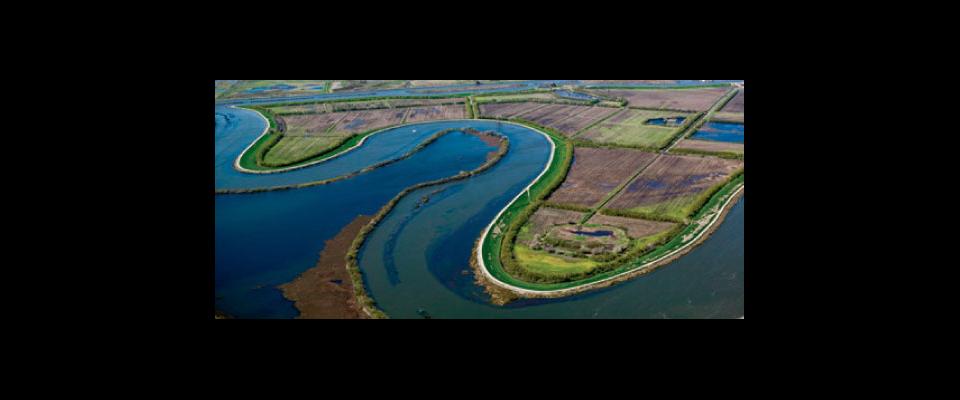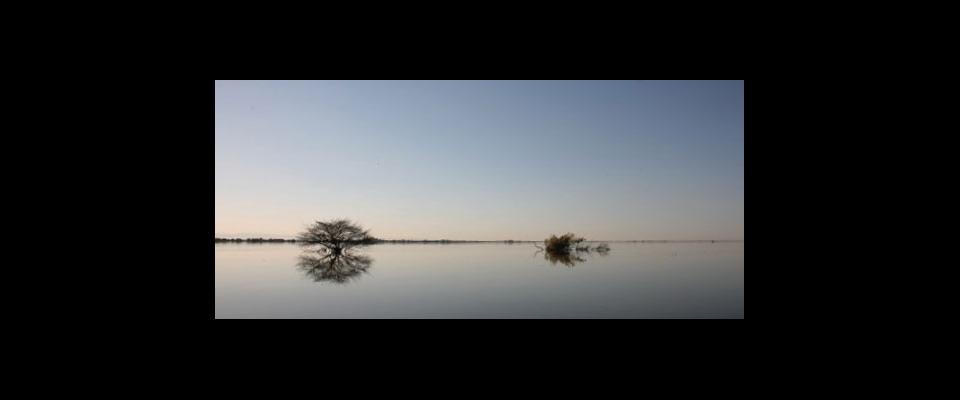Could a major earthquake bring a Katrina-like catastrophe to the California Delta? Seismologists are convinced a big quake is overdue, with potential to bring down Delta levees, swamp its residents, and imperil a major source of drinking water for 25 million Californians.
“There is a two-in-three chance,” wrote UC Davis’s Jeff Mount and Berkeley’s Bob Twiss in a 2004 study that “floods or earthquakes will cause catastrophic flooding and significant change in the Delta by 2050.” One reason for this, Mount said, is the shoddy, haphazard construction of the Delta levees, going back to the 19th century. “The levees evolved,” said Mount. “All their foundations are substandard. Levees will sink into their underlying foundations when subjected to significant shaking.” And the track record is already clear: In the 20th century, according to a study by the state Department of Water Resources, Delta levees failed 158 times.
Disaster-proofing the levees is not an option either. The California Department of Water Resources also estimates it would cost $1.4 billion just to get the levees to acceptable standards to protect crops—not people. “None of these would meet the standard for a 100-year flood,” said Mount. “It would do nothing to address the earthquake risk.
“You can’t engineer your way out of this problem,” he said slowly, emphasizing each word. “Period. It is too expensive.”
Climate change could hasten the levees’ demise. Even if the sea doesn’t rise to levels that reach the tops, added pressure of more water will put extra stress on the barriers. “By the year 2100,” the DWR report states, “Delta levee failure risks due to high water conditions will increase by 800 percent.”
It all adds up to a blaring wakeup call. “New Orleans was like Pearl Harbor,” said Berkeley engineering professor Raymond Seed, author of reports on the failure of the New Orleans levee system and a member of the Delta Vision task force. “Multiple levee failures at one time in the Delta could flood dozens of islands, cause dramatic changes in the ecosystem, and halt all water exports from the Delta for years,” said the Delta Vision report to the governor.
These multiple threats, combined with Katrina’s reminder of human folly, are the main reasons significant change may come to the Delta.
Each year hundreds of billions of gallons of Sierra runoff is pumped out of the Delta to supply farms and water taps. Southern California and the Bay Area each get equal amounts for drinking water (about 1 million acre-feet apiece), with the remaining 4 million acre-feet going to farmers in the San Joaquin Valley. Failing levees would imperil the web of pipes and pumping stations that take freshwater from the Delta. “If you were to create a water delivery system today, the one that exists in the Delta is probably the antithesis of what you would want to construct,” said Richard Frank, executive director of the California Center for Environmental Law and Policy at Berkeley (Boalt) Law.
In its “Delta Vision” report, the task force endorsed a new canal that would circumvent the Delta and reduce the consequences of a levee collapse. (It also wrote approvingly of a “dual conveyance” system that would combine a peripheral canal with a through-Delta water system.)
The proposed technical solution, which passed the legislature in November and will be put to popular vote in 2010, couples water exports with habitat restoration. Pumping out billions of gallons of freshwater a day has sharply increased salinity levels at the peripheries; the delta smelt, three inches long, is on the endangered species list, prompting a forest of proposals for the fish’s protection. A new coalition that combines environmental, farming, and municipal water interests may be enough to force major change in the Delta.
“What’s different today is that the system is in complete crisis,” said Ellen Hanak, director of research for the San Francisco–based Public Policy Institute of California, which endorses the combined canal and habitat restoration plan. “There’s a greater sense that business as usual is just not going to cut it for the fish,” she said. “You’ve got to create more physical habitat that’s good for these guys”: an estimated 100,000 acres, at a cost in the “hundreds of millions.” The second physical transformation—water conveyance around the Delta—would safeguard exports of water by building a “seismically repairable” canal, thus protecting the system that delivers roughly a quarter of Southern California’s drinking water, as well as large amounts to the Bay Area and farmers in the San Joaquin Valley. The estimated $11 billion cost of a peripheral canal would be guaranteed by bonds and paid back by the users, according to Hanak.
The proposal has many detractors, including local farmers, grassroots environmentalists, and fishers. The latter can scarcely believe that the hated canal they worked so hard to defeat a generation ago has somehow been raised from the dead—this time with growing bipartisan support in the legislature. The battle in 1982 was bitter enough to recall the old saying attributed to Mark Twain: “Whiskey’s for drinking; water’s for fighting over.”
“Once we build a canal, will that fix the problem?” asked David Zetland, a Berkeley-based political economist and founder of the Aguanomics blog. “We’re still going to have a crashing ecosystem in the Delta.” He points to a more radical solution advocated by a small group of grassroots environmentalists: End all exports of water to Southern California and San Joaquin Valley farmers. This “radical ecology” solution would essentially “end human influence in the area,” Zetland wrote, while forcing “massive adjustments to land use, employment, and lifestyles.” This, however, is not a solution likely to get significant political traction.
“Restore the Delta to what?” countered Frank. “Do we want to restore it to the vast inland sea that it was before 1850? Or the Delta in the 1950s and early 1960s, before the State Water Project [canal] was created? We’ve got 38 million people in this state, and it’s a matter of trying to multitask. The folks that advocate ‘Let’s just restore the Delta to its natural state’—that’s ignoring half the equation. And it’s not politically realistic.”





















